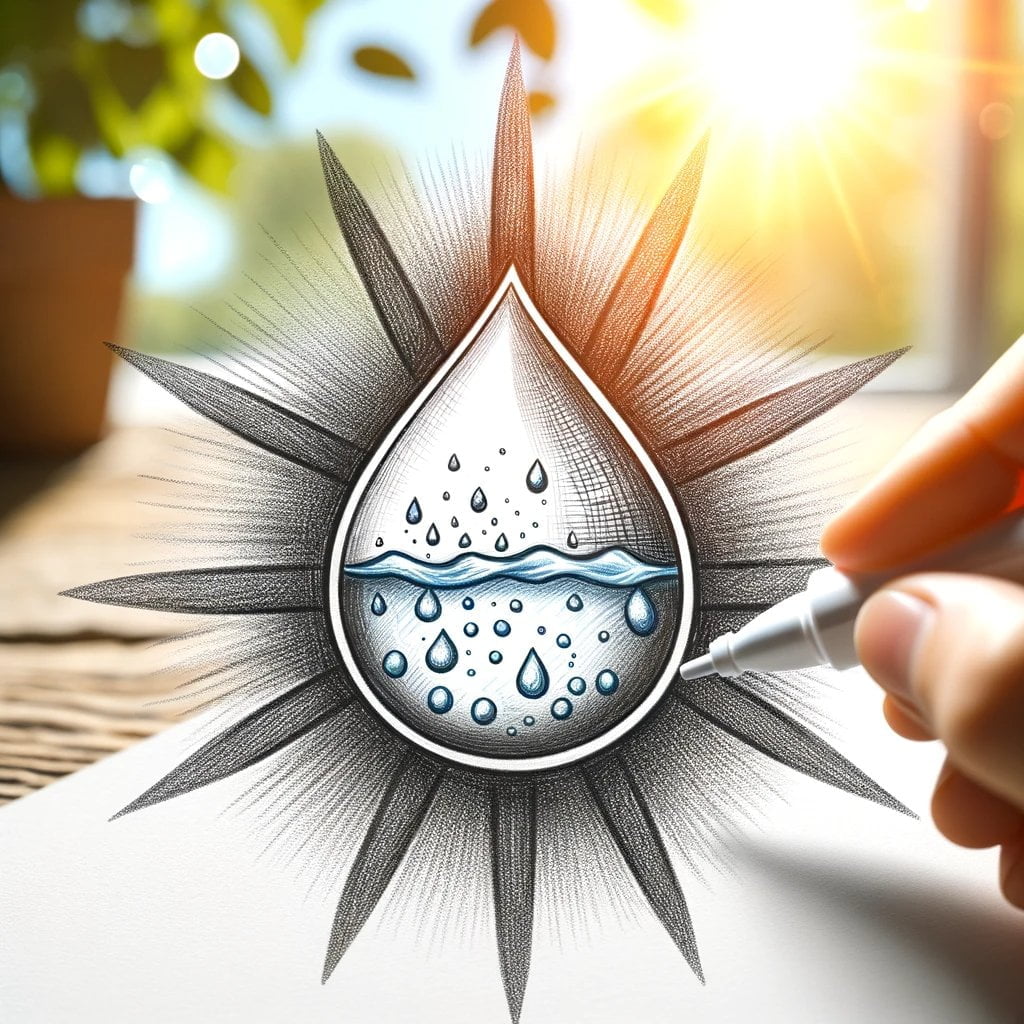Are you prepared to explore the intriguing realm of evaporation? Anticipate to be astounded as we reveal the captivating realities underlying this extraordinary occurrence. This article aims to elucidate the enigmas surrounding evaporation and illuminate its marvelous facets. Those with a general curiosity regarding the interior workings of our planet, including science enthusiasts, are in for a captivating journey into the world of evaporation. Evaporation, the mesmerizing process that molds our environment, is certain to captivate you.
Facts About Evaporation
Evaporation is an intriguing inherent phenomenon that serves as a pivotal component in the water cycle of our planet. It is a process in which liquid water evaporates or gasifies under the influence of solar energy. As we explore the marvels of evaporation, we shall reveal some intriguing facts that are certain to astound you.
1. The Captivating Phenomenon of Evaporation: The sun provides the energy for the remarkable process of evaporation. It supplies the thermal energy required for the conversion of liquid water to vapor. Water molecules acquire energy as the Earth’s surface is heated by the sun’s rays and escape the liquid to ascend into the atmosphere as an imperceptible gas.
“Like a symphony conductor, the sun orchestrates the mesmerizing dance of the water molecules, bringing evaporation to life.”
2. Humidity: Vitality’s Substance: The principal contributor to atmospheric moisture and the determinant of the relative humidity in our surroundings is evaporation. This humidity is essential for plant and vegetation development and maintenance. This allows them to prosper, absorb water, and contribute to the complex equilibrium of our ecosystems.
“Humidity, the invisible embrace of moisture, cradles the breath of life, nurturing nature’s vibrant tapestry.”
3. Influence of Temperature: The rate of evaporation is significantly influenced by temperature. Extremely hot environments, such as deserts, induce rapid lake evaporation, which results in the deposition of mineral-rich, saline sediments. On the contrary, evaporation proceeds at a reduced velocity in milder regions, leading to the development of lakes and other aquatic environments.
“With temperature as its guide, evaporation’s pace dances to the rhythm of the earth, shaping landscapes and leaving its mark.”
4. The Molecule Dance: No more than the molecules in close proximity to the liquid surface endure a transition from liquid to vapor during the process of evaporation. These highly charged molecules escape the liquid’s confines and ascend into the atmosphere, contributing to the gaseous water’s imperceptible orchestration.
“In the delicate waltz of evaporation, the bravest molecules step forward to take flight, leaving their liquid companions behind.”
5. The Cooling Effect: Evaporation absorbs heat from its surroundings as it is an endothermic process. During its transformation from a liquid to a gaseous state, water absorbs energy from its surroundings, thereby contributing to the cooling of the environment. Following a refreshing shower in the rain or a dip in the pool, this cooling influence becomes palpable on the skin.
“Like a gentle breeze on a scorching day, evaporation infuses its surroundings with refreshing relief, soothing the world in its embrace.”
6. Condensation, the antithesis of evaporation, transpires when water vapor returns to a liquid state subsequent to its cooling process. This process is what causes precipitation in the form of clouds, condensation, and rain. Evaporation and condensation maintain the water cycle on our planet by means of a delicate equilibrium.
“In the poetic dance between evaporation and condensation, water weaves its timeless tale, scribbling clouds in the sky and painting rainbows on the horizon.”
These astounding evaporation facts reveal the splendor and intricacy of this natural occurrence. Evaporation is a fundamental component of the global water cycle, enabling the movement of water molecules and utilizing the sun’s radiant energy. Its delicate equilibrium, which is maintained by means of temperature, humidity, and condensation, serves as a poignant reminder of this fact.
Therefore, the next time you experience the refreshing sensation of a summer rain or observe the dance of steam that emerges from a cup of tea, pause to contemplate the marvels of evaporation.
“Embrace the enchantment of evaporation and unveil the secrets hidden within the ethereal whispers of water.”
Natural phenomena such as condensation and evaporation are intriguing and have substantial implications for our daily existence. If you want to uncover mind-blowing facts about condensation and evaporation that will leave you awestruck, then click on this link: facts about condensation and evaporation. As you explore the realm of water vapor, temperature fluctuations, and the metamorphosis of matter into different states, you will be astounded. Behold the formation of dew on vegetation during the early morning hours and the aggregation of clouds in the sky. Anticipate satisfying your insatiable curiosity as we unveil the scientific mysteries that underlie these captivating phenomena. It is highly recommended that you seize this opportunity to expand your knowledge regarding the remarkable phenomena of condensation and evaporation.
FAQ
Question 1: What is the significance of evaporation in the water cycle of the Earth?
Response 1: Evaporation plays a crucial role in the Earth’s water cycle as it facilitates the transformation of liquid water into vapor. It facilitates the recirculation of water from the Earth’s surface to the atmosphere, where it can condense into clouds and ultimately return to the planet as precipitation, thereby restoring our supply of freshwater.
Question 2: What is the medium through which evaporation occurs on Earth?
Answer 2: The principal source of energy for the evaporation process on Earth is the sun. As the heat source for transforming liquid water into vapor, the sun propels the evaporation process.
Question 3: What is the function of transpiration in the generation of atmospheric humidity or moisture?
Answer 3: The principal origin of humidity or moisture in the atmosphere is evaporation. Water vapor is introduced into the atmosphere during evaporation, thereby augmenting the overall moisture content. This is crucial for establishing the optimal conditions that prsustain themselveshe growth and viability of plants and vegetation.
Question 4: Is the rate of evaporation constant across a range of temperatures?
Answer 4: In contrast, the rate of evaporation varies in accordance with temperature conditions. Evaporation is more accelerated in regions characterized by elevated temperatures, due to the increased energy required to transform liquid water into vapor. Conversely, regions characterized by low temperatures undergo reduced rates of evaporation.
How exactly does evaporation function at the molecular level?
Answer 5: Methanol is produced exclusively from molecules in close proximity to the liquid surface during evaporation. These molecules acquire sufficient energy from the surrounding environment to transition from the liquid phase to the gaseous state. This procedure is carried out until the liquid is completely exhausted.
- Unlock Water’s Symbolism: A Cross-Cultural Exploration - April 20, 2025
- Identify Black and White Snakes: Venomous or Harmless? - April 20, 2025
- Unlocking Potential: Origins High School’s NYC Story - April 20, 2025


















